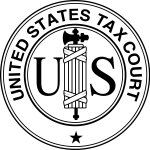 In Palmer Ranch v. Commissioner, a TEFRA partnership avoided accuracy-related penalties even though the Tax Court reduced the fair market value of its conservation easement by $3.98 million.
In Palmer Ranch v. Commissioner, a TEFRA partnership avoided accuracy-related penalties even though the Tax Court reduced the fair market value of its conservation easement by $3.98 million.
The taxpayer claimed a $23.94 million charitable contribution deduction on its 2006 partnership return. The IRS disallowed $16.97 million of the value under exam. At trial, the parties presented valuation experts who relied upon the comparable sales method to set the before and after value of the property. The taxpayer’s expert valued the land at $307,000 per acre, while the IRS expert came in at at $94,000 per acre. The Tax Court reviewed the four properties used by both experts and compared the property’s then-current use with its highest and best use. The taxpayers’ contended that 360 multifamily dwelling units could be developed on the 82-acre parcel. The IRS disagreed, emphasizing: a failed rezoning history; environmental concerns; limited access to outside roads; and neighborhood opposition. The Court rejected each of these arguments and found that “there is a reasonable probability that [the parcel] could have been successfully rezoned to allow for the development of multifamily dwellings.”
The IRS also argued that the real estate market was softening in 2006. Judge Goeke accepted the idea of a declining real estate market and reduced the taxpayer’s pre-encumbrance appraisal of the land from $25.2 million to $21 million. Using the same “after” value percentage (5% of the unencumbered property) the Court found that the fair market value of the conservation easement was $19.96 million.
Following the framework set forth in the U.S. Supreme Court’s recent decision in United States v. Woods, the Court determined that it had jurisdiction to consider the IRC § 6662 penalties. The Court then accepted the taxpayers’ reasonable cause defense and disallowed the 20% penalty because the taxpayer: retained a tax attorney to advise them on the tax aspects of the easement donation; hired a credible, licensed appraiser, and made a good-faith attempt to determine the easement value.
Read the Tax Court opinion here: Palmer Ranch v. Commissioner, T.C. Memo. 2014-79

